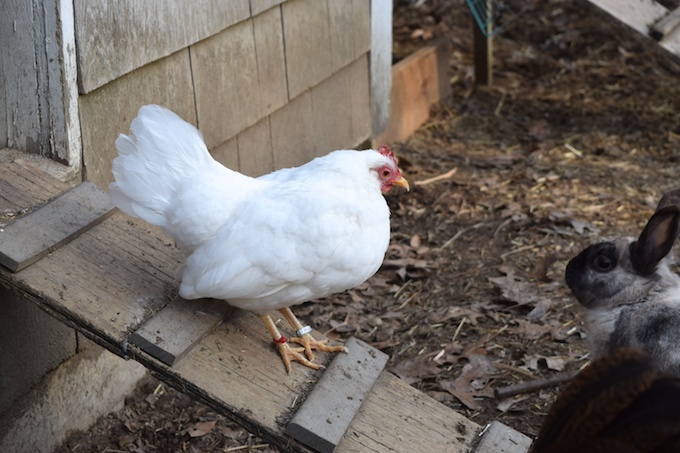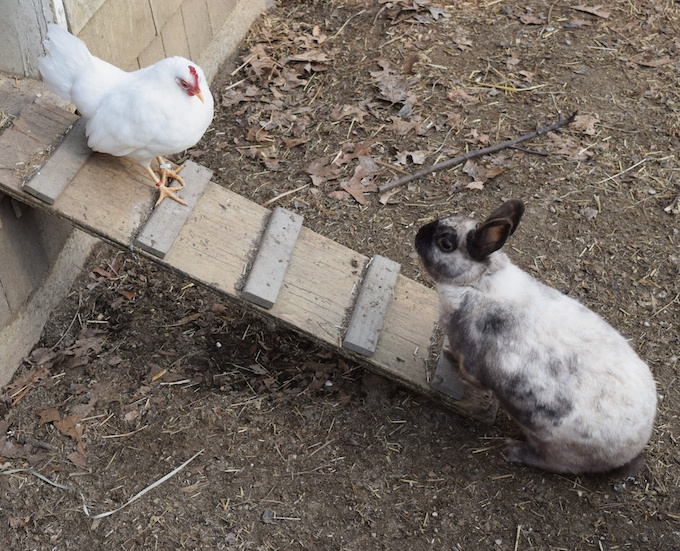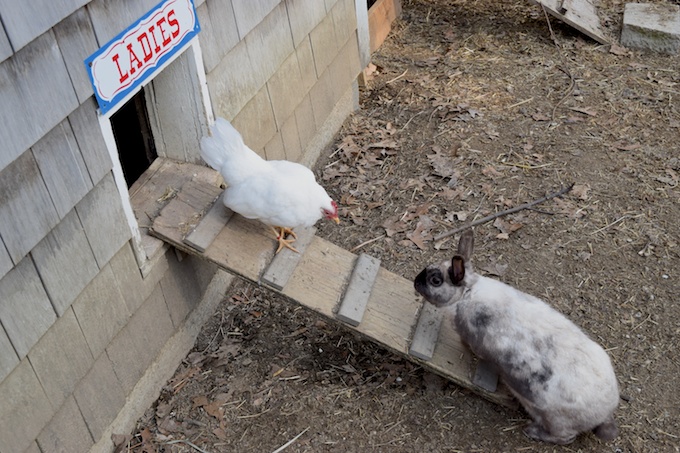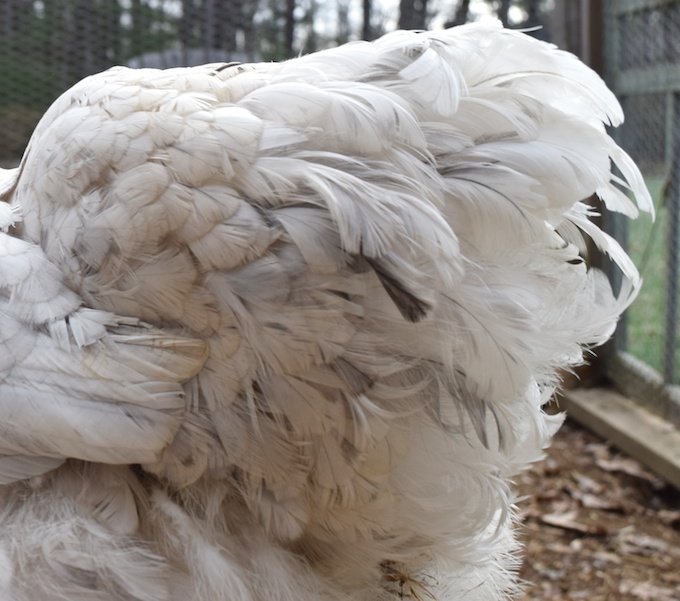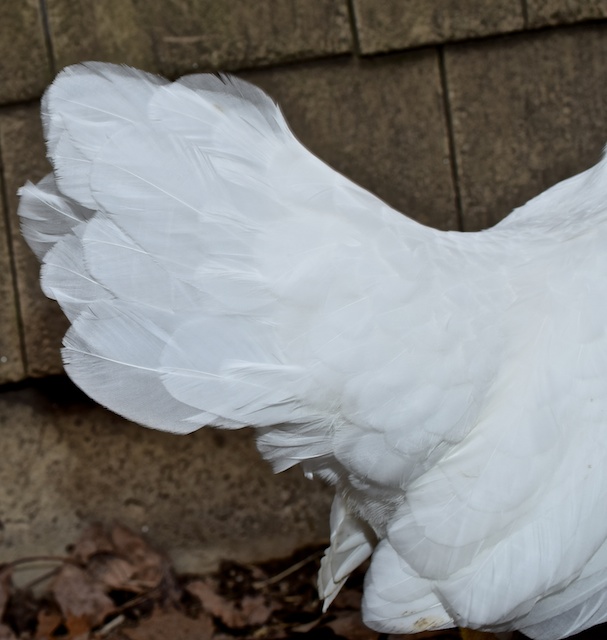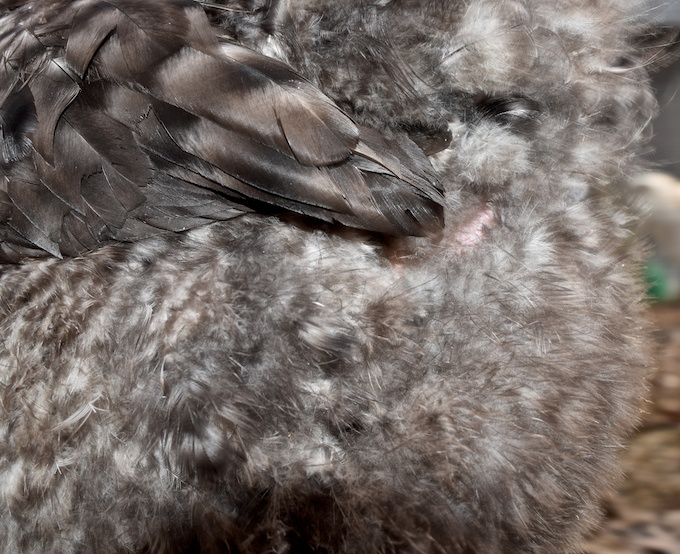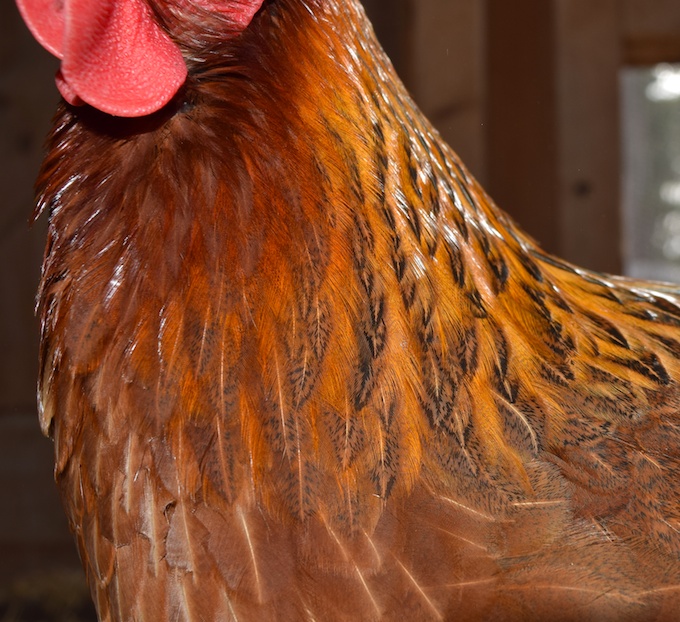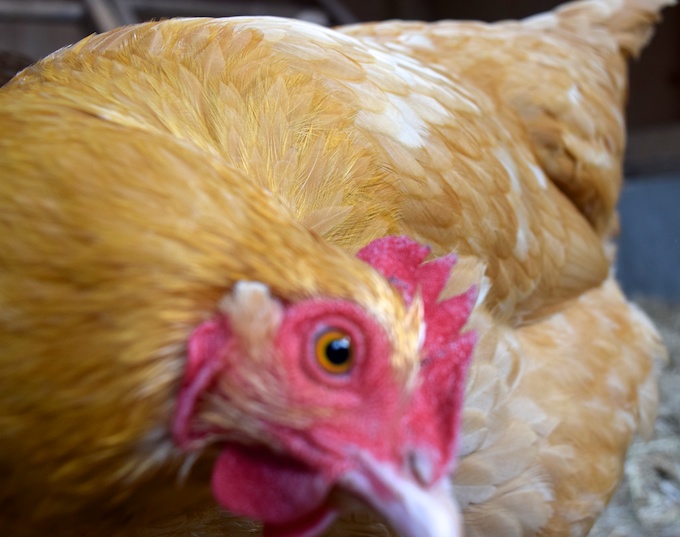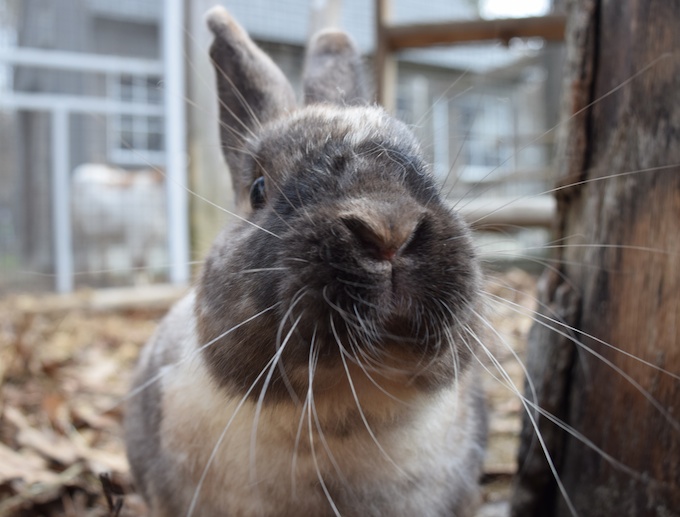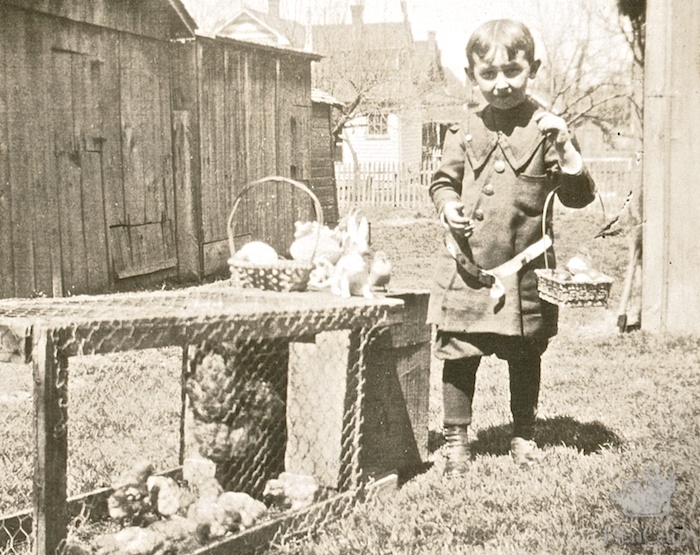What I love about vintage cat photos is that the cats aren’t groomed and sleek. They’re scruffy. The boy in this photograph has been made to wear his fanciest outfit – heavens, a satin bow and ruffles! His hair is clean (rare in an age when baths happened at best once a week.) But the cat? Nothing slick and shiny about her. The cat looks to be a useful mouser. I can practically hear the self-satisfied purr.
Author Archives: Terry Golson
The Impasse
Betsy is an elderly hen. Pick her up and she is literally as light as a pile of feathers and old bones. But, she’s had seven years to figure out what’s what. She’s had seven years of being a determined little hen that goes about her business the way that she wants to. I used to take her on school visits. Unlike my other traveling hens, who settle down in my lap while the children pet them, Betsy made it clear that she would meet the students on her terms. She would stand on my forearm and gaze at each child as they reached over to touch her. Betsy has long been retired from such work, and she spends idle stretches of the day quietly basking in the sun and napping on the roost. But she still knows what’s what. In the morning, Betsy likes to stand at the top of the ramp, taking in the surroundings.
That’s her place. Betsy will not change her routine, not even for a rabbit that wants to hop back into the coop.
The conversation is brief. No drama ensues. Betsy makes it clear what’s what.
The impasse never lasts long. It is no surprise that Betsy continues to go about her day, exactly the way she wants it to go.
Chicken Feathers
One of the reasons that chickens are such successful domestic farm animals is that they are easily bred for traits that we like. Color, size, temperament, type of comb, and even quantity, shape and hue of feathers, have all been manipulated by us to suit both our economic needs and also our fancies. Certainly, there is no reason for a cochin to be covered in a heavy coat of soft feathers other than because we like the looks of it.
A hen has about 8,000 feathers, and, like all birds, they vary in shape and purpose depending on where they are on the body. Some are longer and harder and are found on wings and tails. These are more prevalent and obvious on a Leghorn like Betsy, than the aforementioned cochin.
These outer feathers act to shed rain and act as a barrier to wind. That is, they do so unless we’ve bred the birds to have soft or twisted feathers in their place.
All chickens have undercoats of downy feathers. Here is a photograph of Veronica, and you can see what a splendid job these under-feathers do of keeping her bottom warm.
Feathers along the neck are often short and pointy, and are called hackle feathers.
It doesn’t matter which way the hen turns to look, these feathers keep her skin covered.
Each type of feather has a unique structure. The flight feathers have minute barbs, rather like Velcro, to keep them tight. Chickens preen to keep these feathers smooth and flat. When I do school visits, I hand out feathers for the children to rough up, and then to make right again. You don’t pet a hen like you do a dog. You never want to, as the saying goes, ruffle her feathers. Always stroke in one direction, gently.
Feathers have origins going far back to the beginnings of life on earth. Some dinosaurs had feathers. Not all dinosaurs died out. Some evolved into birds, and some of those birds became chickens. We all have layers of ancient beings inside of us. I recently heard a radio interview of the author of Your Inner Fish. I will be buying this book, if only to read further about how our hiccups are related to how tadpoles breathe.
The Cornell Lab of Ornithology is a font of information about all things bird. The Lab has recently put up the best explanation of what feathers are, how they function, and how they evolved, on their page, All About Feathers. As an adult who likes reading about science, I found it fascinating, but, this site’s clear graphics and precise language makes it suitable for grade schoolers as well. Peruse it, then go back again and look at your own dinosaurs chickens.
My Easter Bunny
I had a blogpost planned for today. It was filled with science, feathers, and the evolution of dinosaurs into birds. This morning I went out to the coops to take photographs for it. Phoebe had other plans for me.
There will be Easter egg hunts on Sunday, she said. There will be rabbits doing the important work of delivering chocolate. You need a photograph of the Easter Bunny.
Me.
The post about feathers will be up next week. Have a wonderful weekend.
Easter Basket
He has a basket with eggs filled with candy, and even a toy rabbit, but this young boy has no need for chicks in his Easter basket, because he has a mama hen and her babies right in his backyard!
What’s going to be in your Easter basket?
NOTE: In this photograph (from around 1910) the hen is living in what is often called a broody coop. This is a temporary shelter for a hen to sit on her eggs, hatch out her chicks, and care for them for about a week, safely away from the rest of the flock. These days, some catalogs are selling similar shelters, billed as urban coops for small flocks. Don’t purchase one! You’ll have flock health and behavior issues. Read this FAQ for coop design criteria that will keep your chickens happy and healthy, and take a look at my Pinterest page where I have an annotated collection of small coops to give you ideas.

